The Mennonite Churches
The Mennonite Churches go back to the radical Reform movement of the XVIth century ; they were persecuted in Switzerland, then settled along the Rhine valley. In the XVIIth century there was a split between liberal Mennonites and Amish, or conservative Mennonites who emigrated to the States. Today there are 32 independent Mennonite Churches in France.
Origins
The Lutherans drew their name from Luther, the Calvinists (the Reformed Church) from Calvin and the Mennonites from Menno Simons (1496-1561), a Dutch priest who joined the Anabaptists in 1536. Menno Simons was the spiritual leader of little groups of believers who survived in secret, with great difficulty, after many years of persecution.
The movement really began in Switzerland around 1520. In Zurich, there was a dispute about the best way of promulgating the ideas of the Reform movement : some people, like Zwingli, wanted the civil authorities to be involved in the running of the Church. Others were opposed to this ; they considered that the evangelical principles of the New Testament implied the separation of Church and State and the baptism of believers.
In spite of the decree issued by the town council of Zurich, Conrad Grebel, one of the leaders of the radical group opposed to Zwingli, baptized an adult believer on 21st January 1525. This took place in the presence of some other “brothers”, in a private house. It led to his being sentenced to life imprisonment by the authorities but he managed to escape. The baptism was the cause of a definitive split with Zwingli, and from then on the Mennonites were called Anabaptists or the “rebaptisers”.
Beliefs
- The authority of the Scriptures;
- God’s Word revealed to mankind;
- Baptism only performed after a confession of faith and statement of personal commitment by the believer;
- Faith in God more important than obedience to the State;
- Renunciation of violence and military service;
- Renunciation of swearing an oath;
- The believer must love his neighbour and help other believers.
The arrival of the Mennonite Church in France
As they were outlawed and persecuted in Switzerland, the Anabaptists sought refuge all along the Rhine valley, wherever people were willing to receive them. Several Anabaptist communities were know to have settled both in Strasbourg and throughout Alsace, from the XVIth century onwards. They remained there until the end of the XVIIth century.
The Amish schism
Towards 1690, in Sainte-Marie-aux Mines, one of the “elders”, Jacob Amman, considered that the Mennonite communities were no longer faithful to the biblical principles of their founders. He called for a return to a simple life in opposition to the values of the world around them. A schism could no longer be avoided between the conservative Amish members and the more liberal Mennonites – almost all the Mennonite churches in eastern France became Amish.
They got into more trouble because they refused to take an oath or to fight. There were several waves of emigration to the United-States. The Alsatian Amish left the country, but those who remained in France gradually renounced Amish traditions and their strict costume.
The administration of the Mennonite Churches
The Churches are congregationalist, independent and sovereign in their Church structure and community. Usually, the spiritual life of each Church is led by a group of elders, preachers and deacons who are elected by all members of the community. Some Churches (7 in 2006) have full or part time pastors who receive a stipend. Other Churches manage with lay volunteers. The ministry of women is gradually being recognized. The separate Churches are grouped together in the Association des Eglises Evangéliques Mennonites de France (Association of Evangelical Mennonite Churches of France), which runs all their activities and charities.
Associations for Public Good Works
- Comité de Mission mennonite française : today they support and send out missionaries to Laos, Burkina Faso, China and to Chad.
- Charities : Les Amis de l’Atelier in Châtenay-Malabry (Hauts-de-Seine), l’Association du domaine Emmanuel in Hautefeuille (Sarthe), l’Association Fraternelle Mennonite et Servir Valdoie (Territoire de Belfort), who care for the handicapped, underprivileged children, the elderly…
- Emergency Aid : this gives help to the victims of famine and natural disasters such as flooding or earthquakes.
- Training : the Centre de Formation in Liestal (Switzerland).
- Centre mennonite d’étude et de rencontre in Saint Maurice (Val-de-Marne).
- Commission de Jeunesse – Joie et Vie (Mulhouse, Haut-Rhin) : this association organises “colonies de vacances”, (camps for children and teenagers), holidays for young adults and the elderly, training courses, special themed weekends, choirs…
- Editions mennonites Montbéliard (Doubs) : these publishers issue the monthly magazine Christ Seul and three-monthly publications about particular subjects.
- Association française d’histoire anabaptiste mennonite, in Ingersheim (Haut-Rhin) ; this association gathers together all the information about Mennonite assemblies. The annual publication : Souvenance Anabaptiste.
Social development
For a long time, the Mennonites were country people who were quite happy working on the land and living a simple life. However, by the beginning of the third millennium, there are not many farmers left : the Mennonites have come out of their isolation and learned to adapt to today’s society.
Mennonites in France and throughout the world
In France, there are about 2050 Mennonites, in 32 Churches – most of these are in the east of France but there are 3 in Paris.
Throughout the world (2003 data) there are 450,000 in Africa, 208,000 in Asia, 139,000 in Central and Southern America, 450,000 in the United States and Canada, 530,000 in Europe, making around 1,300,000 in all.
The International Mennonite Conference gathers together Anabaptist and Mennonite groups from all over the world.
Relations with other Protestant Churches
Talks are going on between the Mennonites and the Federation of French Protestants.
In Alsace-Moselle there is also dialogue with the Eglise de la Confession d’Augsbourg d’Alsace et de Lorraine (ECAAL) and in 1984 both Churches adopted decisions that had been made.
References
- Éditions mennonites, 3 route de Grand-Charmont, F-25200 Montbéliard;
- Centre mennonite d’études et de rencontre, 13 rue du Val d’Osne, F-94410 Saint-Maurice;
- Association française d’histoire anabaptiste mennonite, 9 rue du Château Geisberg, F-67160 Wissembourg.
Bibliography
- Books
- MATHIOT Charles et BOIGEOL Roger, Recherches historiques sur les Anabaptistes, Le Phare - Flavion, Namur, 1969
- NUSSBAUMER André et WOLFF Michèle, Histoire des Assemblées mennonites françaises à la veille de l’an 2000, Sepher, Herborn, 2003
- SEGUY Jean, Les Assemblées anabaptistes-mennonites de France, École des hautes études en sciences sociales, Paris, 1977
Associated notes
-

The radical Reformation in 16th century
The expression “radical Reformation” was given to a complex and multifarious movement that found the lutherans and the swiss Reformers not daring enough, and considered that the Reformation had only... -
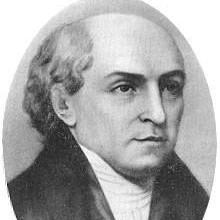
The Baptist Churches
The Baptist Churches have been established in France since the beginning of the XXth century in certain regions (mainly in the North), but with the help of the English and... -
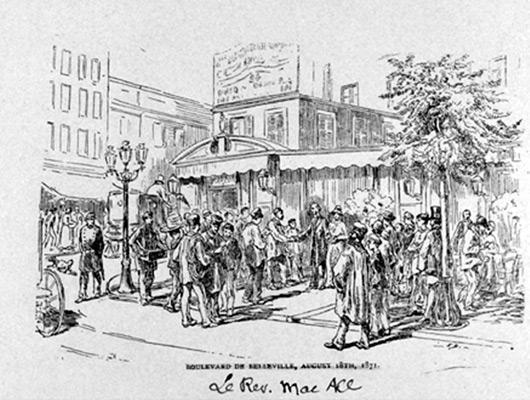
The Evangelical Churches
The existence of Evangelical Churches in France goes back to the beginning of the XIXth century. There are at present 1850 Churches with 350.000 members and there are about 200... -
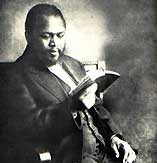
The Pentecostal Churches
The Pentecostal movement is the most successful Protestant denomination in the world today, with about 150 million members. Its presence in France goes back to the 1930s and its main... -
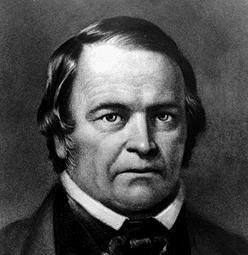
The Seventh Day Adventist Church
The Seventh day adventist Church has its roots in the Reformation movement of the XVIth century and the Revival movement of the XIXth century ; the latter being the stronger influence.... -

The Evangelical Lutheran Church of France
In 1808, quite a large Lutheran community in Paris consisting of foreigners became a Church which was connected to Strasbourg. The Evangelical Lutheran Church of France was established in France... -
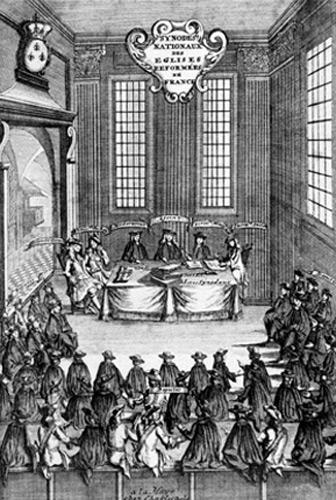
French Reformed Church
The French Reformed Church (Eglise Réformée de France) was founded in 1938 ; its origins go back to the XVIth century to the reformed Churches which were set up by Jean... -
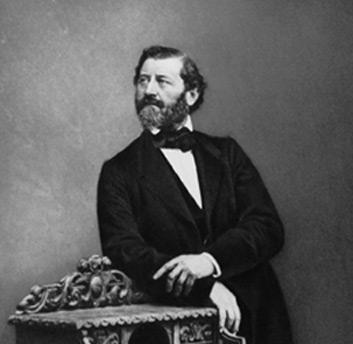
Union of Evangelical Free Churches
The Union des Eglises Evangéliques Libres (UEEL) (Union of Evangelical Free Churches) was set up in 1849, because its members wanted to openly strengthen their links with the Reform movement... -

The Protestant Churches of Alsace and Lorraine (UEPAL, EPCAAL and EPRAL)
The Lutheran and Reformed Churches of Alsace and Moselle have been working towards unity for a long time. These efforts finally met with success when the Union des Eglises Protestantes... -
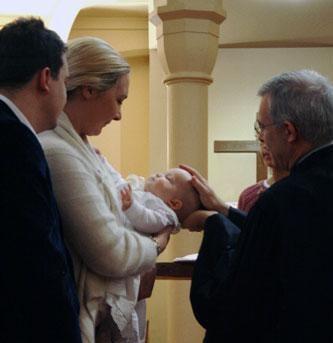
The Protestants and baptism, be they Reformed, Lutheran or Evangelical Baptist
In Protestantism baptism and Holy Communion are the two recognised and practiced sacraments. Baptism signifies the unity of Christians in Christ’s death and resurrection. It testifies to forgiveness. It welcomes... -
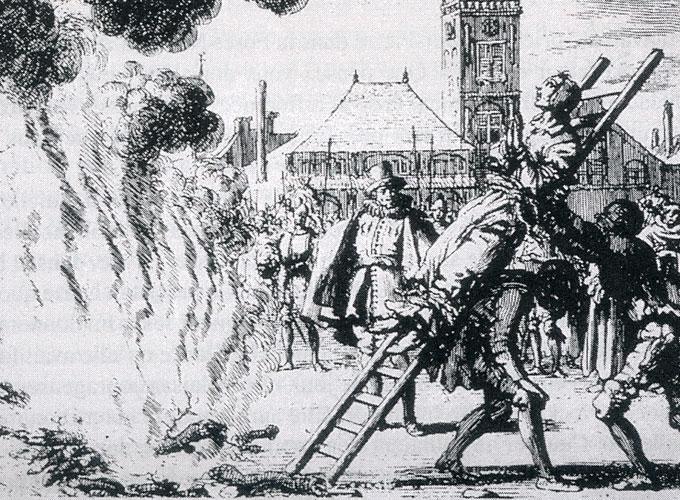
The birth of the Amish community in Alsace
The Amish first appeared amongst the Anabaptist community in Alsace towards the end of the seventeenth century. The founder, Jacob Amann, demanded a community with a more rigorous discipline. -

The Amish in Alsace in the 18th century
At the beginning of the 18th century, the Amish communities once more had to face persecution and were expelled from their lands. This dispersion, however, renews their strength. They are...
